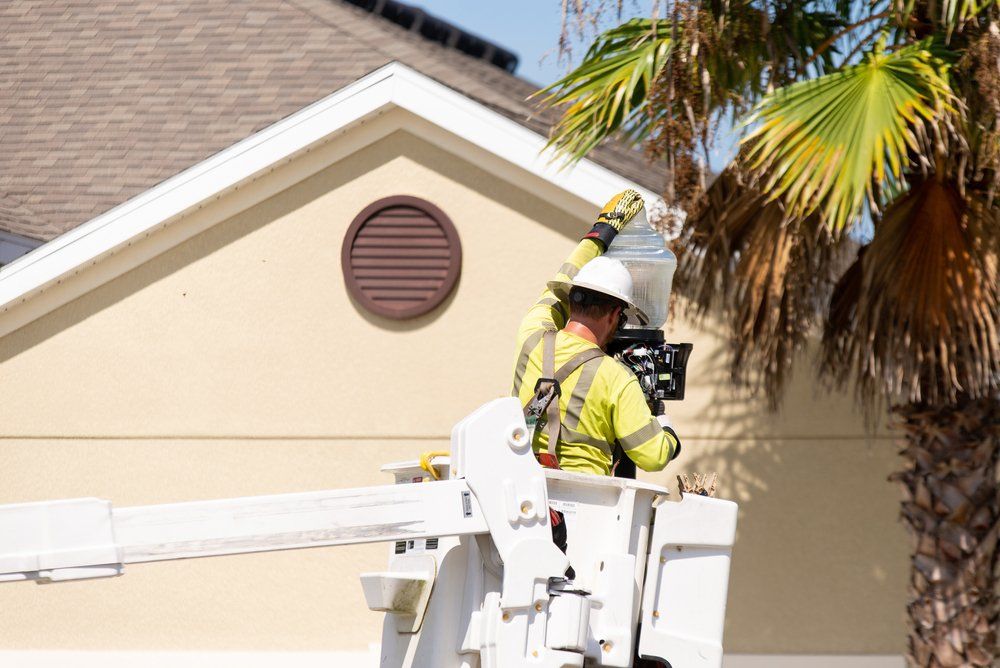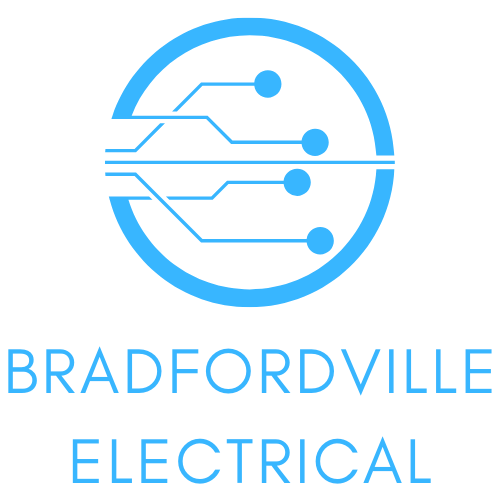Bradfordville Blog

What is an electrician? Electricians are responsible for installing and maintaining electrical power in buildings and homes. They may be asked to troubleshoot and repair electrical equipment. In some cases, they may be asked to install new wiring. An electrician may also supervise other electricians, perform maintenance, or install new equipment. These professionals use various testing equipment to determine whether an electrical problem exists. They may be called upon to fix electrical equipment, or replace wiring. Electrical wiring What is electrical wiring? This term refers to a system of wires that connect an electric load to the supply mains. Electricity is used for power and lighting in homes and industries. Electrical wiring can be single or three phase and can run from a main distribution board to various devices. For residential installations, wiring can be divided into three categories: insulated cables, bare copper ground wire, and two-wire systems. Before you start wiring a home or business, it is important to know what is appropriate for your project. Basic electrical installations include powering fixtures and appliances with circuits. Single-phase power is the most common type of electrical wiring in the home. Non-metallic (NM) wiring is the most common type of wiring found in homes today. It comprises two or more individual wires wrapped in protective plastic sheaths. These wires are usually marked with a "hot" wire that carries current. Non-metallic wiring also contains a "neutral" wire and a ground wire. Troubleshooting Electrical troubleshooting involves carefully inspecting the circuit to determine the cause of the problem. A thorough examination looks for mechanical damage, such as strained wires or loose components. Other signs of mechanical damage include overheating. To make the best use of your sense of smell and visual observation, you should have the necessary documentation for your electrical fixture. Ideally, if you're unsure about what to look for, you should contact an electrician to assess the situation. An electrician can also measure the components of electrical fixtures to determine the root cause of a problem. A simple faulty motor or rotor may indicate that a component needs to be replaced. The electrical professional will know the correct signal to send to the main circuit board to restore proper operation. Identifying the components' parameters will also enable them to pinpoint the issue and prevent it from reoccurring. Troubleshooting with an electrician will help you understand which electrical components are at fault and prevent future issues. Repairing If you have an interest in repairing electrical systems, you can start by learning how to troubleshoot them. Electrical systems are complex, and people who do not have the proper training and experience usually fix the symptom rather than the cause. This can lead to more problems than you initially had. Fortunately, there are some tips for repairing electrical systems that will make it easier for you to do this on your own. Follow these tips and you'll soon be on your way to becoming a certified electrician. An electrician can fix appliances, as well as install and maintain new electrical systems. These projects will increase the overall power of the home. This may mean installing new receptacles and electrical components. You may also need to install new breakers with higher wattage ratings. In this way, you'll cut down on your power bills while improving your home's electrical system. An electrician can also perform safety checks and advise management on how to make their equipment safer. Supervising A Supervising Electrician (SME) is an electrical trades professional who is in charge of overseeing the installation of electrical systems, equipment, and fixtures. The SME also oversees projects and performs electrical inspections and permits for non-electrical trades. A Supervising Electrician may be designated to work in any department of a building or organization where he or she has direct supervision over a group of electrical workers. The duties of a supervising electrician are varied, but generally involve the assignment of tasks to subordinates. Typical responsibilities include inspecting electrical systems, procuring materials, and establishing effective working relationships with subordinates. Some electrical workers are required to supervise more than one subordinate supervisor. If a supervisor cannot perform the work properly, he or she may have to step in and supervise the entire project. While a supervisor oversees electrical work, it is not his or her responsibility to take the initiative to conduct the inspection. Certification If you're planning to become an electrician, you need to know how to gain the certification. There are many different types of certification for electricians, but you should make sure to keep up with the requirements in your state. Before you take the exam, you should check if your competitors have them, and get started researching. You can also choose to pursue the certification of organizations with good reputations, which will usually point you to industry-leading tests. For instance, the National Center for Construction Education and Research offers courses on sustainable energy, power line work, and power generation. Then, once you've passed their assessments, you can earn certification. Another organization, called the National Institute of Certification in Engineering Technologies (NICET), offers electrical training and assessment. After gaining experience in the field, you can take the exam for an electrician license. This will enable you to start working without supervision. However, you will have to pass a re-examination every few years. In addition, you will need to continue your education to stay up to date on the latest electrical codes. However, it is worth noting that there are three types of certification for electricians. You can choose to pursue one that will suit your needs best.

If you want to hire the best electrical contractor for your job, you must follow certain guidelines. You should check their safety record, license, and insurance, and customer service. You should also check the safety record of their employees and check if they are experienced in such projects. You can also go through their websites for more information and tips. There are many websites which guide people to choose the best electrical contractors for their job. Listed below are some of the ways to choose the best electrical contractor for your project. Customer service A good electrical contractor will have a great customer service philosophy and strive to maintain a culture of respect for their work, their team, and their clients. The level of professionalism that they display should speak for itself. Check their track record and work morale to see if they uphold their own high standards. It is not surprising that customers value customer service highly when choosing an electrical contractor. It is the reason why you need to research their work ethics and customer service before selecting them. A great electrical business will be able to charge a premium price for their work and back it up with a high level of customer satisfaction. Safety record When selecting an electrical contractor, look for one with a good safety record. Electrical contractors are prone to accidents, but you can reduce the risk of injuries by choosing someone with a proven safety record. Accidents related to electricity often involve the installation of equipment, plumbing, and lights. However, electrical contractors are also at risk of fencing and other hazards. The following are some tips to keep yourself safe around electrical systems. Read on to learn how to choose an electrical contractor with a good safety record. Consider the safety record of an electrical contractor. OSHA reports that electrical contractors account for 37% of all catastrophic accidents. These incidents can lead to more serious injuries, including paraplegia, brain damage, and even death. The safety record of an electrical contractor will help you determine if they're up to the challenge. Safety managers can also design interventions that minimize these risks. Some red flags for safety management include the presence of overhead moving/falling objects and squeeze-point actions. The degree of injury depends on several factors, including the construction site and the task performed by workers. License Getting an electrician license requires a solid education. High school students who want to pursue a career in the field should focus on science and math in their studies. Those who are suited to the classroom environment may also find a post-secondary education beneficial. Though classroom curriculum may differ, most schools focus on a combination of subjects. If you're looking for a high-quality education, consider going to a vocational-technical school. Electrical contractors are required by law to be licensed. Many states and provinces offer specific license requirements. A contractor with a licensed electrical license in one state may work in another. You should ensure that the electrician you choose is licensed in the state in which you live. The state will check to ensure the license is legitimate before approving it. While it takes some time to earn an electrician license, it is well worth the effort. Insurance The electrical contractor you hire should be insured, as this is crucial to protecting your property. A general liability policy may not be enough, as accidents can happen. There are other risks associated with electrical work, such as faulty wiring that could lead to a fire. A professional liability policy may protect you against these risks, as well as any unforeseen setbacks to your business. In addition, some carriers package this insurance together for an electrical contractor's convenience. Workers' compensation insurance covers the employer if an employee gets injured or becomes ill on the job. This insurance also covers medical bills and lost wages. General liability insurance protects you against third-party claims if your electrical contractor is found to be liable for an accident. Although electrical contractors should implement the highest safety training programs, the risk of injury and property damage is always present. This coverage protects you from the cost of defending a liability lawsuit. Experience There are several reasons why you should hire an electrician with plenty of experience. Whether it is a simple task, or a more complex job, an electrician should be able to communicate well. This means that he or she must have good verbal skills and good reading comprehension. Additionally, an electrician should be able to write clearly. This is important since communication can sometimes be challenging in an industry where communication is vital for safety. Word-of-mouth referrals are useful for selecting a tradesman or service, but you shouldn't rely solely on them. Online reviews and testimonials can provide you with the information you need to make an informed decision. If possible, check online reviews to find out if other customers have had positive experiences with the electrician. You can also ask to see their insurance and license information. It is also important to remember that the state license is only one part of the story.

